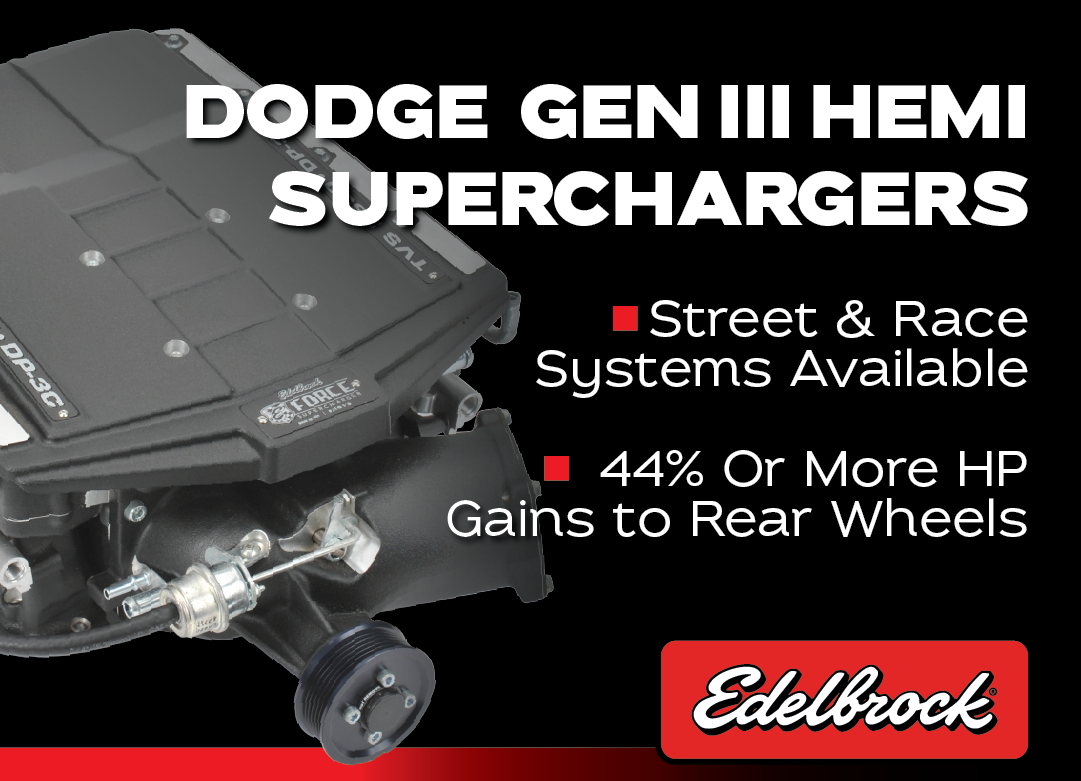
Undoubtedly, you’ve either seen our article on the release of the new “Hellephant” 1,000-horsepower supercharged all-aluminum G3 Hemi or stumbled across it online, so we’re going to dive straight into the flared, finned and frenched ’68 Charger you see before you. Dubbed the “Super Charger”, Mopar’s Head of Design Joe Dehner clearly loved that far-out “Ice Charger” that Dominic Torreto drove around the Arctic Circle in “Fate of The Furious” two years ago, ’cause man, they sure look alike.
Mopar attempted to improve upon the single-most iconic muscle car design to have risen from the height of the era of the same name – specifically, the 1968 Dodge Charger – by stretching the wheelbase, trimming the nose and tail, grafting on a 2018 Dodge Demon hood scoop, adding a 3.5-inch tall wing to the tail, repurpose the quartet of round taillights into exhaust tips (yes, really) and y’know, slap on some seriously massive fender flares and call it a “widebody.” It’s a little confusing, frankly. But hey, it catches your eye.
Here’s the original press release:
The 1968 Dodge Charger, one of the most iconic vehicles ever built by FCA US, is reimagined with modern elements from the current Dodge Charger SRT and the Dodge Challenger SRT lineup to create a unique package for showcasing the Mopar brand’s new “Hellephant” 426 Supercharged Mopar Crate HEMI engine and kit.
The 1968 Dodge “Super Charger” Concept is adapted to accommodate the “Hellephant” engine, enabling the classic ride to slam 1,000 horsepower to the pavement through a stock T-6060 manual six-speed Dodge Challenger SRT Hellcat transmission.
The custom “De Grigio” Grey Metallic classic 1968 Dodge Charger, which is marking its 50th anniversary in 2018, feeds the “Hellephant” fresh air through a supersized hood scoop modeled on that of the Dodge Challenger SRT Demon. The hood features fiberglass construction on the outside with inner-steel construction inside carried over from the original vehicle. The 1968 Charger’s pop-up headlamp design is tweaked to plant Dodge Charger SRT Hellcat headlamps permanently behind the grille. The original’s door handles and drip rails are shaved away, creating a clean, streamlined appearance. Front door vent windows are removed and replaced with a one-piece side glass. The 1971 Duster mirrors add a more modern appearance.
The 1968 Dodge “Super Charger” Concept assumes a “wide body” stance thanks to front and rear fiberglass wheel flares painted “De Grigio” Grey Metallic body color. The front wheels push forward two inches to accommodate the flares and shorten the Charger’s overhang, extending the classic’s wheelbase from 117 inches to 119 inches. Front wheels are stock 20 x 11-inch Devil’s rims pulled from the Challenger SRT Hellcat, while the rears are upsized 21 x 12-inch custom-milled aluminum Devil’s wheels. The body drops 2.5 inches in the rear and 3.5 inches in the front to aggressively hug the pavement. Six-piston Brembos deliver a decisive stopping-power advantage over the 1968 brakes.
Custom fiberglass front and rear bumpers are flushed up and shortened cross-car to provide an integrated design. The custom fiberglass front chin splitter takes influence from the Demon, while the custom rear spoiler is inspired by the modern Charger R/T. The trunk key cylinder lock is shaved and the Satin Black fuel door embellished with a custom-milled aluminum “Hellephant” medallion, one of many unique design touches incorporated throughout the “Super Charger” Concept. Vehicle graphics and badging are Satin Black vinyl decals, including the “Hellephant” logo on the front fenders, “Super Charger” badging above the doors and classic tail stripes at the rear.
The Product Design Office (PDO) team let their imaginations run wild at the tail of the ’68 Charger. The lower exhaust tips are eliminated and replaced with Alfa Romeo Stelvio 5-inch dual-walled exhaust tips re-engineered to run through the taillamp housing. The brake lights have been uniquely reconfigured with LED lights that glow around the exhaust tips.
Inside, door panels and interior trim are Satin Black with the unique “Hellephant” milled medallion applied on the upper door panels. The Dodge Viper steering wheel also carries the “Hellephant” medallion at its center. The instrument panel insert is “De Grigio” Grey Metallic body color and the dash is customized with a full array of Mopar gauges.

The body-color center console holds a manual shifter from the Dodge Challenger SRT Hellcat, as well as the ignition button and toggle switches for the headlamps, wipers, fog lights and hazard lights. The stock front seats have been replaced with Dodge Viper seats re-wrapped in Alcantara leather accented with red stitching and are fitted with four-point Sabelt black racing harnesses. The Dodge Challenger SRT Demon seat delete option opens up the rear and also sheds weight while making space for a custom 2-inch roll cage designed to follow the profile and harmonize with the shape of the day light opening (DLO). A Challenger SRT Demon net allows for storage of racing equipment such as helmets and gloves. A black Challenger SRT Hellcat carpet covers the rear of the interior, while the front features custom floor mats modified from the current Charger SRT and Mopar pedal kits for the Challenger.















If they build the “Hellephant it would sell like hotcakes. I personally would make sure I had one in my garage beside my 1971 Dodge SuperBee and 1955 Chevy street rod.
The “Hellephant” is the crate engine itself, not the car. And yes, it is being sold through Mopar right now. Orders are stacking up currently.